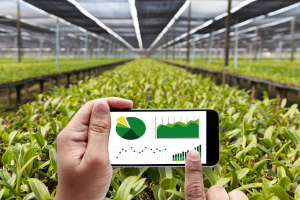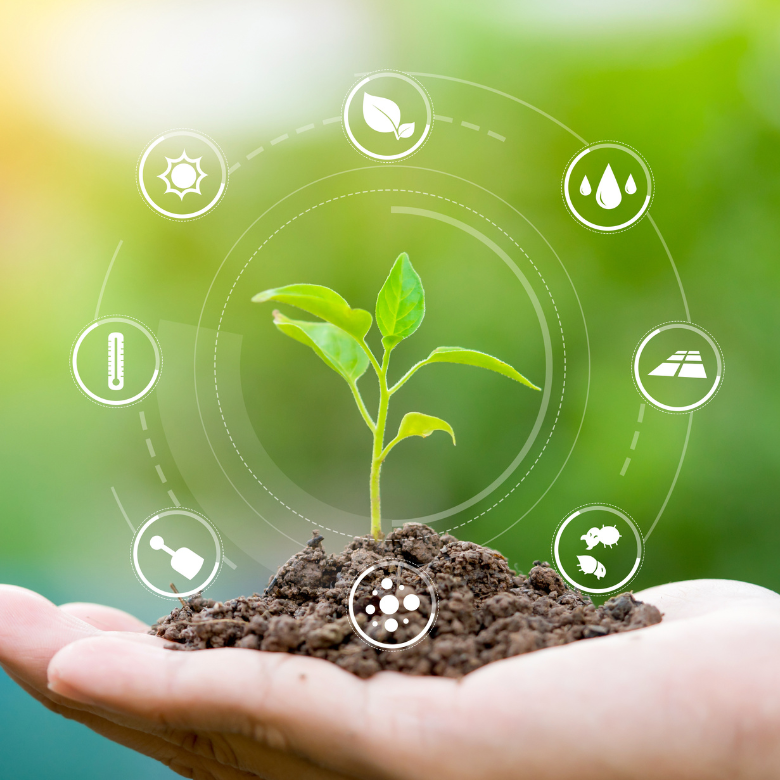Every farmer's priority is to maintain the highest possible quality and volume of yields. To this end, they take care to use the right fertilisers, plant protection products and efficient production methods. Nowadays, however, we are increasingly benefiting from innovations implemented using new technologies. Not everyone is aware that modern crops are mostly planned on the basis of precision farming principles. In the following article, you will find out what this solution is and why you should use it.

What is precision farming?
The agricultural sector has undergone many significant changes over the last few decades. The first association with innovation in this field is usually modern equipment. However, this is only one of them. Farmers’ access to new sources of information and research, the exchange of experience between them, the subsidies they receive and the improvement of production methods are also of great importance. Understanding these phenomena is necessary to formulate a definition of precision agriculture, as its development is linked to the need for increased productivity and economic growth. It also depends directly on the competence of the farm owners.
Properly applied chemistry in the garden can make a significant difference to our crops, but we now have other tools at our disposal. These include innovative computer, satellite and analytical systems. With their help, it becomes possible to delineate the areas where yields are likely to be highest.
Precision agriculture can therefore be defined as the set of technologies that make up a modern farming system. One of its biggest advantages is the ability to adapt production methods and analysis to the site. This is a huge change from previous economic activities. Indeed, without technological support, farmers could only rely on their predictions.
The precision agriculture applied in Poland allows:
- an increase of yields,
- a rational choice of fertilisers and plant protection products,
- significant savings,
- collection of geological data,
- acting in accordance with the European Green Deal,
- environmental protection.
As you can see, precision farming has many applications. Each is based on computer support. Thanks to modern technology, we can carry out all stages of the process, starting from recording the size of the field by the combine harvester (in this way we are able to create models and interactive maps that help us to sow and protect the crop economically) to the appropriate intensification of fertilisation. Farmers using modern solutions can also estimate yields and their profits with greater accuracy.
Advantages and disadvantages of precision farming
Precision farming is becoming increasingly popular due to the range of benefits that come with its implementation. Farmers consider the most important of these to be:
- Collection of data on site characteristics, e.g. soil pH and cultured plants and wildlife. Most importantly, however, precision farming gives us an idea of how the above parameters change over time. The use of modern technology helps farmers to adequately prepare for each working season, and the information collected and its analysis forms the basis of precision agriculture.
- Ability to estimate yields and increase yields. All the data collected allows us to take better care of the soil and crops. Knowing that the soil is acidified, you may decide to use appropriate measures, such as the 20W fertiliser lime offered by the PCC Group, which will work well in the process of restoring the optimum soil pH.
- Possibility of rational crop intensification. By knowing which parts of the land are likely to yield the highest quality crops, farmers can take extra care to protect and fertilise them. The consequences of the selective application of these measures are also significant financial savings. These involve not only buying fertiliser, but also fuel. Indeed, one of the components of precision farming is the use of GPS navigation, which allows us to reduce the consumption of raw materials and significantly increases the comfort of our daily work.
Another extremely important advantage of precision agriculture is its impact on environmental protection. This is because it eliminates excess chemicals from the soil. It is worth noting that this also affects the health of consumers.
What, on the other hand, are the disadvantages of precision agriculture? A key obstacle for many farm owners is unfortunately proving to be the cost of digitising agriculture. Moreover, this process requires them to continuously educate and innovate in their area. Each entrepreneur makes these changes at their own pace, resulting in large discrepancies between the quality, productivity and precision of individual crops. However, it is worth noting that farmers can count on support in the form of grants and training.

Key systems of precision farming
You already know that precision agriculture is based on the collection of data on a selected area. This is made possible by agrotronic systems, which can be defined as systems for innovative machine control in the agricultural sector. Individual treatments and agrotechnical elements are adapted to the needs and structure of the site. Above all, it is worth highlighting navigation and satellite systems, which are increasingly being used in Polish precision agriculture. Specialists are working to continually improve them so that we can obtain increasingly detailed data.
Another precision farming system is the so-called VRA system, known as variable rate fertiliser technology. It uses the data collected by the other systems, mainly navigation, to adjust the intensity of fertilisation of the land according to its potential and predicted yields. Innovation also allows us to take appropriate action on less fertile land to enable equally high returns in the future. Indeed, precision farming systems provide us with information on the levels of micro and macro nutrients in the soil.
Precision agriculture in Poland
The described solution is gradually gaining popularity in our country. Farmers are increasingly asking themselves not only what organic fertilisers are and what chemistry and in what quantity to use, but also how to reduce the use of these inputs and how to manage them in a rational way. Data from 2021 shows that less than 40% of farmers recognised the concept of precision agriculture, but with the right education and proposed solutions, modern technologies are being implemented on an increasing number of farms. Increasing environmental and technological awareness allows us to increase productivity and profits. Therefore, the PCC Group offers not only the purchase of high-quality green chemistry, but also insights into numerous articles that can be helpful to farmers and growers.
- https://www.gov.pl/web/ijhars/raport-o-stanie-rolnictwa-ekologicznego-w-polsce-w-latach-2021-2022
- Laskowska P., Informatyka w rolnictwie, czyli rolnictwo precyzyjne, https://it-consulting.pl/autoinstalator/wordpress/wp-content/uploads/2018/08/2017-08-22-22-22.pdf#page=44
- Gozdowski D., Samborski S., Sioma S. 2007. Rolnictwo precyzyjne. SGGW, Warszawa.
- Faber A. 1998. System rolnictwa precyzyjnego. I. Mapy plonów. Fragmenta Agronomica 57